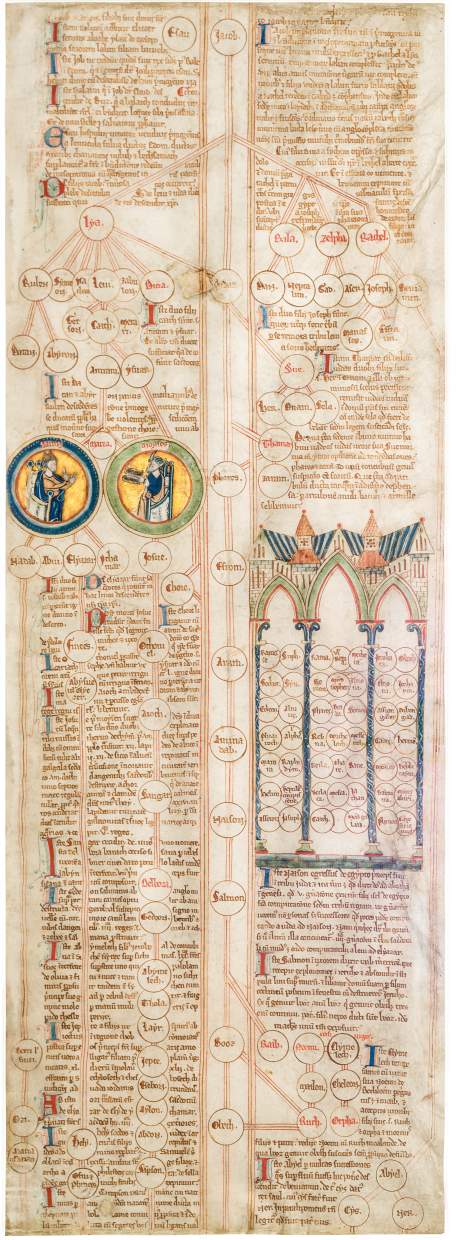Artworks



The present illustrated leaf was originally the third membrane of a scroll of eight. It was made in England c. 1280 (and likely taken apart in the 1920s). Four of the original membranes and one cutting have been preserved in various collections. This folio deals with the days of Moses, Aaron and the exodus of the Israelites out of Egypt, and continues until Ruth. It is exceptional by way of its fine colours and illumination in gold. The present illuminated example stands in line of an English tradition of rolls that follow a similar iconographic model, likely going back to a French original. The fact that this large membrane now reappears unscathed after many years is quite exciting.
It is exceptional by way of its fine painted colours and illumination in gold. The “portraits” of Moses and Aaron show each as a patriarch seated as medieval ruler on high-backed throne dressed in blue on a field of gold. Almost parallel in the accompanying column, three pointed arches are topped by a complex roof structure and contain 49 roundels with 48 names. These arches and columns name the people of Israel and list the resting-places of the Israelites in the wilderness. They symbolize the concept of the “mansions”, the biblical word for the tribes in the desert (illustrating Book Numbers 33). The illuminator may have been influenced by the style of William de Brailes (active in Oxford, c. 1230-1260). The proportions of figures, treatment of drapery, and caricatures of certain faces recall the work of an artist of a prayer book from St Augustine’s Abbey at Canterbury.
Structuring history with the use of diagrams and stemmas on a roll was an important late 12th-century innovation. Peter of Poitiers (d. c. 1205) summarized world history as the genealogical tree of Christ, beginning with Adam and Eve and continuing with brief texts and diagrams, which included circles with names and portraits linked by bands that delineated the genealogical branches. Peter’s concept and its visualization was designed to instruct students and met with great success. A complete roll would have surveyed the six ages of biblical history, the sixth and last beginning with the birth of Christ.
Read more about this artwork in our Spotlight.



